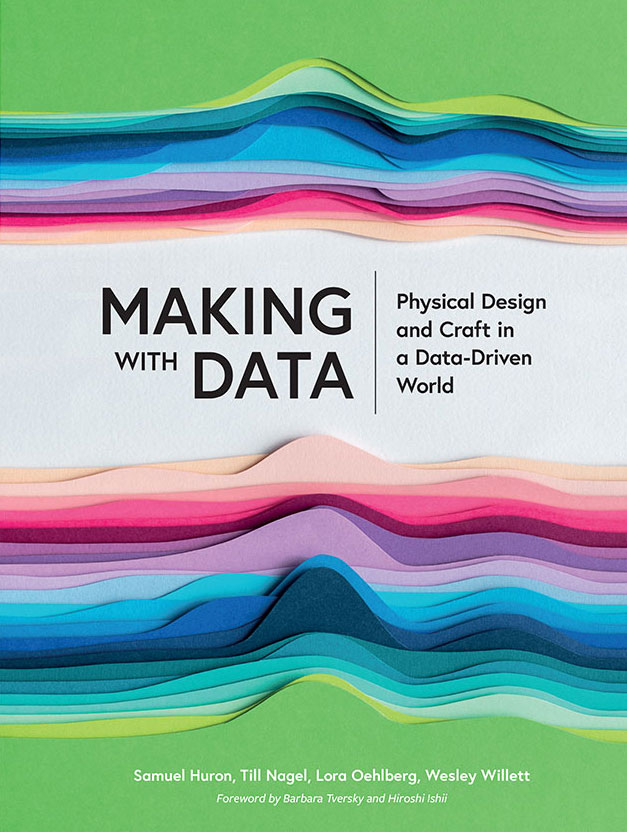Inspiration
Hartsfield-Jackson Atlanta International Airport is the world’s busiest air travel hub. To the regular traveler, however, this superlative traffic is not apparent when visiting any of the concourse buildings.
Making the invisible visible is the key motivation behind many of our dynamic artworks and the AirFIELD visualized in real-time all flight movements at the Atlanta airport.
As a data-driven art piece, the AirFIELD was connected to a live stream of Atlanta flight traffic data that triggered visual ripples throughout the sculpture with each start and landing.
The 90-foot-long by 30-foot-wide by 21-foot-tall (27.4m x 9.1m x 6.4m) sculpture was composed of over 1,500 custom-made Liquid Crystal discs with the ability to individually fade from a clear state to white opaque. All discs appeared clear until triggered by a real-time data impulse, which would send a wave of white up or down the two swooping shapes of the sculpture.
Algorithms using fluid dynamics translated the flight data into custom animations: planes traveling a short distance created small ripples in the sculpture while planes travelling a longer distance caused greater activity.
The visual activity caused by a single start or landing would reverberate for several seconds, sometimes overlapping with the next movement, reflecting Atlanta airport’s rapid-fire flight movements during rush hours.

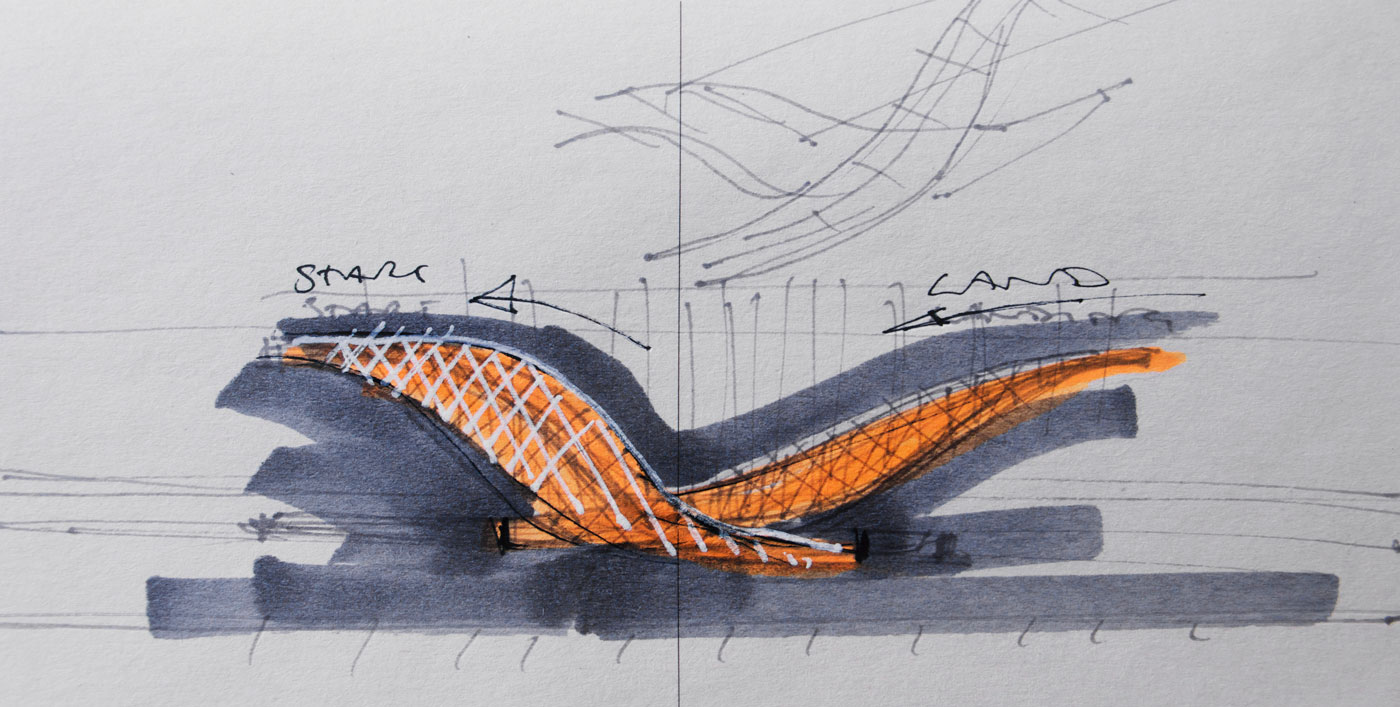
Process
The trajectories made by airplanes taking off and landing inspired us to create the two sweeping shapes that make up the sculpture. We took a long-exposure photo of several starts and landings at night superimposed on each other, which we then translated into the initial sketches for AirFIELD.
3D Modeling
Our design ambition was to create a dynamic visual shape to hover within the double height space of the concourse atrium. Over the course of several weeks, we conducted extensive 3D modeling tests to optimize the overall arrangement. The finalized design of two intersecting shapes consisted of a total of 1,500 circular tiles, each disc with the diameter of a typical runway light. Different viewing angles allowed for a visually complex interplay of perspective, form, transparency, light, and shadow. When seen straight-on from the side, the sculpture was reminiscent of a bird in flight.
Data Mapping
The AirFIELD received real-time information about flights coming and going from the Atlanta airport. The real-time flight data feed was provided by FlightAware connected to our computer server. The software constantly monitored a live stream of Atlanta flight traffic data which triggered generative motion behavior based on the specific size of each aircraft. The master computer sent data to a set of distributed circuit boards, that in turn sent an electrical charge to each disc in the sculpture. The simple synchronized fade in and out with a gradient opacity change was sequenced to produce on and off sweeps of movement chasing from back to front.
Prototyping
Prior to the on-site installation, we tested the discs, the mounting system and the programming in a spatially compressed array at our fabricator’s facilities. Our main objective was to ensure reliable performance of the discs and also to test and fine-tune the visual effect of the animations to make them appear fluid and organic: we wanted it to feel as if you were standing at the end of the runway and these flights are flying over you and you’re physically seeing the fluid dynamics of the aircraft as they go by.
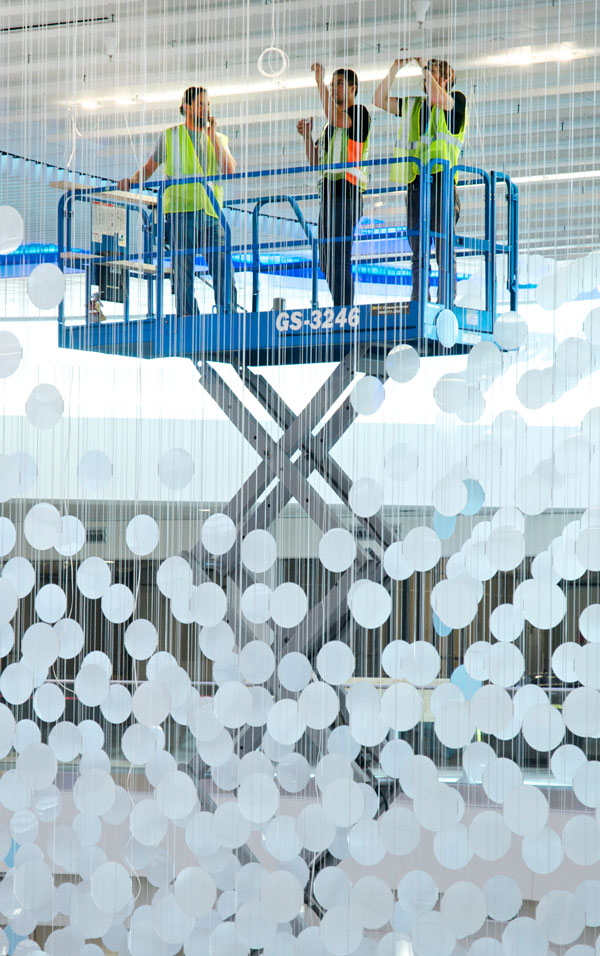
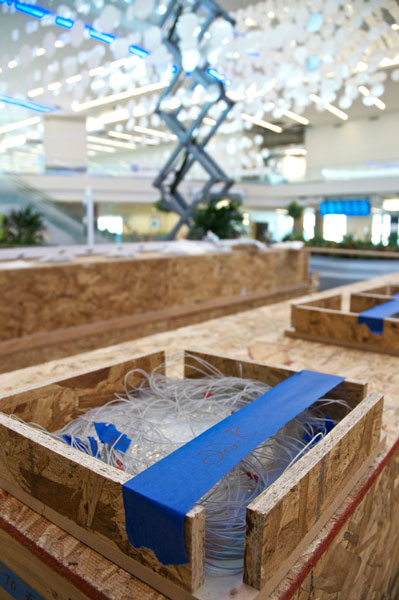
Rigging
The sculpture was mounted to a hidden structure above a drop ceiling via threaded rods that connect to 15’ (4.5m) sections of aluminum “V” channel, serving as a structure and wire management for the 3,000 wires attached to the 1,500 circular tiles, connected to 81 circuit boards all linked back to a single computer server below.
Tools and Materials
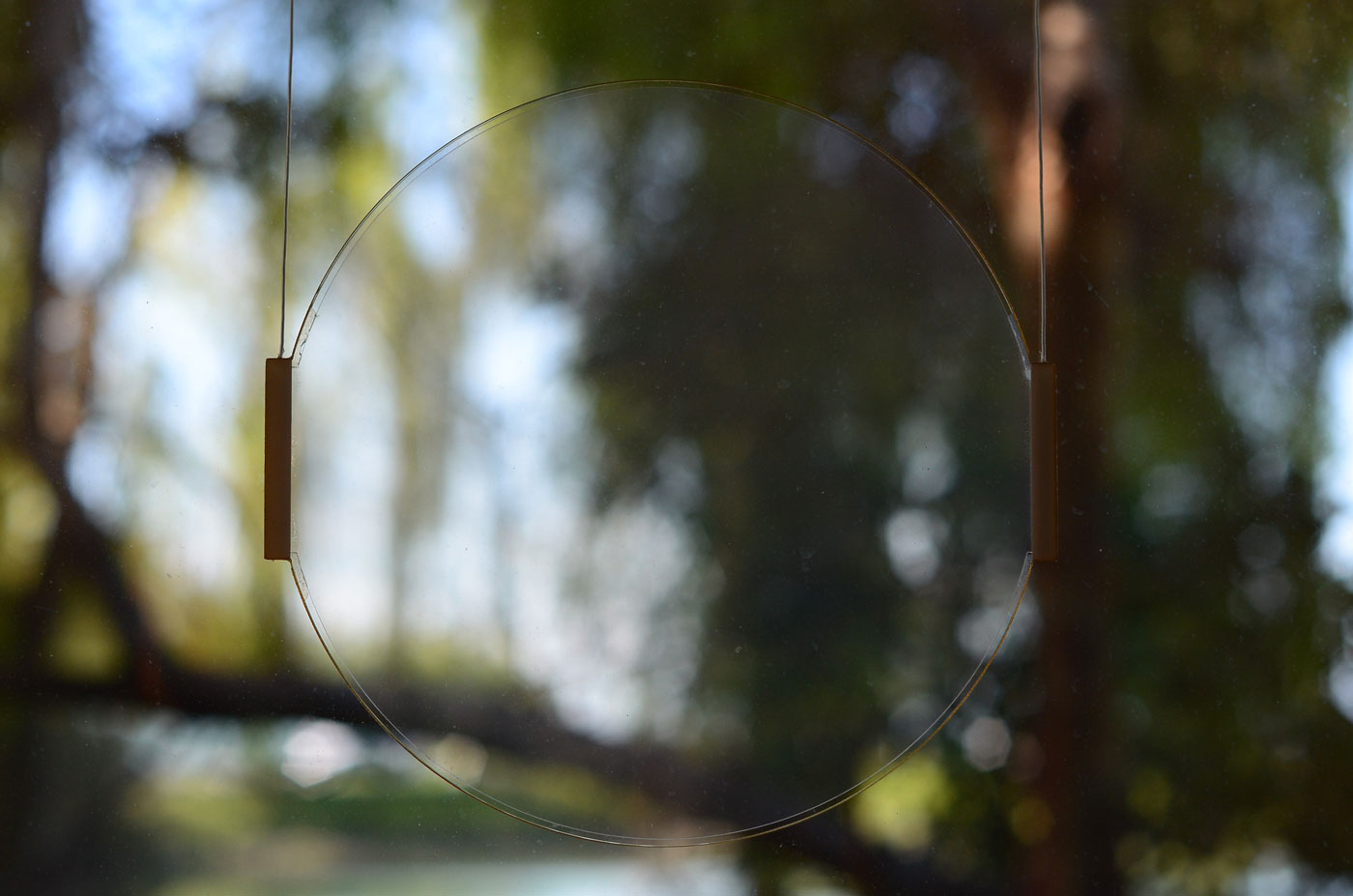
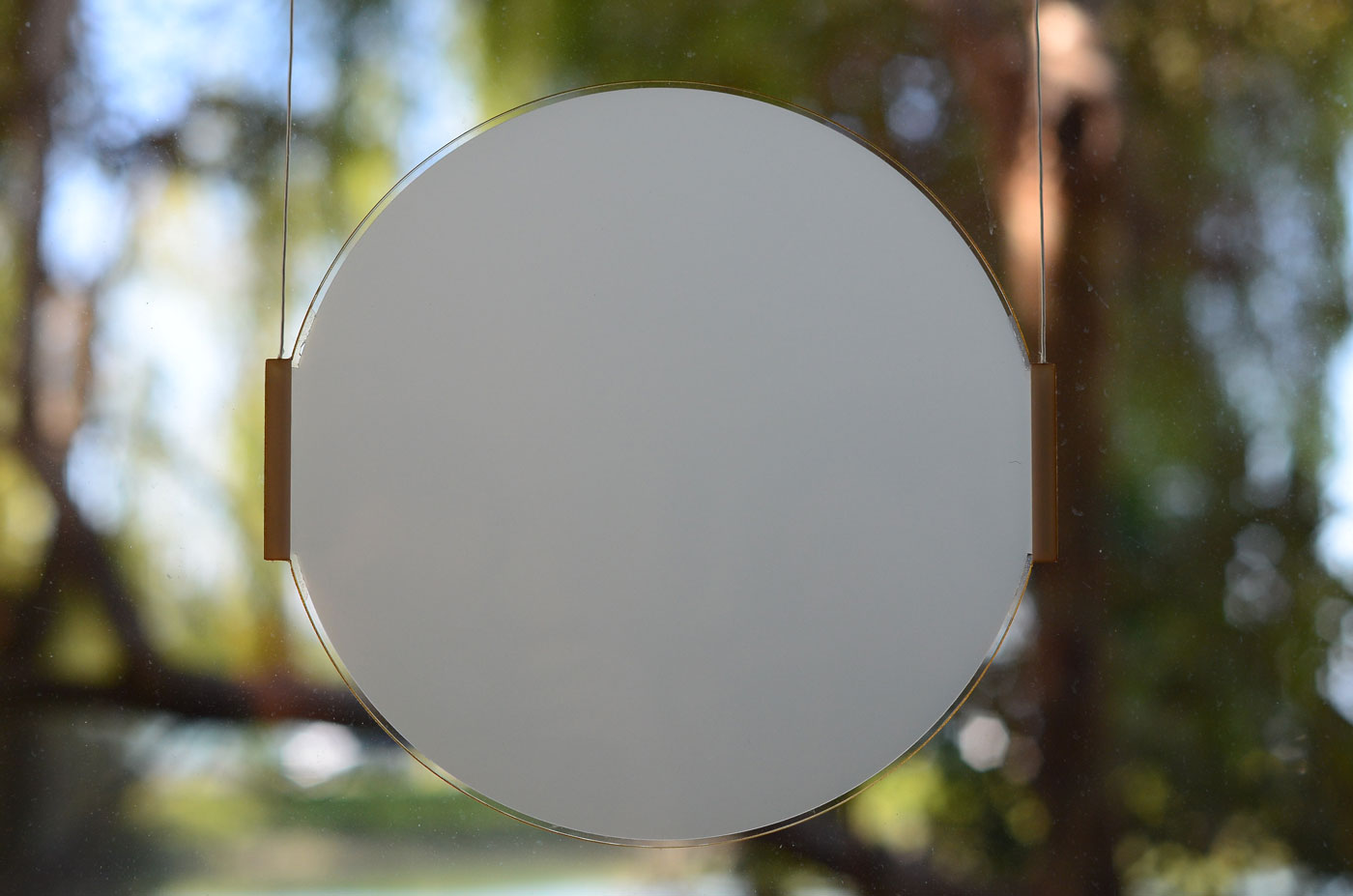
Liquid Crystal
Each of AirFIELD’s 10-inch circles was made of a liquid crystal switchable film laminated between two layers of polycarbonate to create large acrylic pixels. The LCD discs were prototyped and produced by Citala - LCD Display Products Manufacturer, now acquired by Glass Apps.
Wiring
We used 100,000 feet of tinned copper 26 AWG wire with clear silicone to provide electrical and data connectivity to each disc.

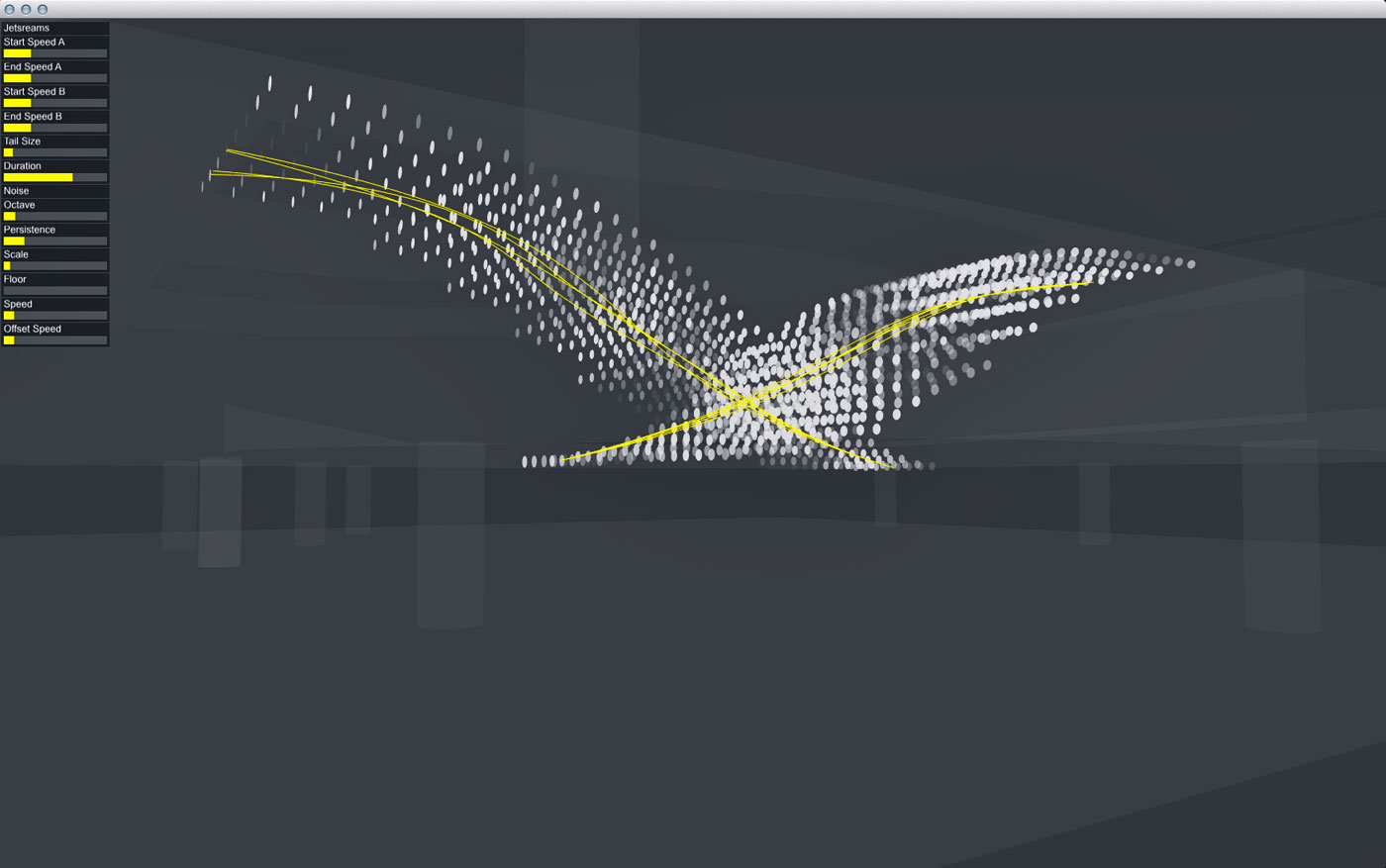
Software
The 3-D form development of the sculpture was refined in Rhinoceros 3D and animated in Grasshopper. The custom software powering AirFIELD was written in C++ and built upon the innovative art programming library called Cinder.

Data Feed
The real-time flight data feed of up to 2500 flight movements a day was provided by FlightAware, a global aviation software and data services company.
Reflections
The AirFIELD project has been a highly complex installation on many levels. Unlike a static sculpture comprised of static materials, the AirFIELD sculpture consisted of dynamic components that have to constantly perform while relying on outside sources, in this case the flight data stream. Fatigue of dynamic materials, like some early types of LCD glass becoming cloudy, oxidized and unresponsive, necessary hard- and software updates and lapses in permanent data connectivity can all lead to performance issues. Therefore, points of potential failure have to be monitored and – if necessary – serviced on a regular basis. Especially for a multi-year installation, this puts a certain level of collaborative effort between the artist team and the artwork host. Our data-driven eCLOUD project at Norman Y. Mineta International Airport, San Jose, California – comparable to AirFIELD in complexity and performance – is a great example of possible longevity of such a dynamic artwork: with the proper maintenance support (which includes regular software updates, data source management and periodic computer hardware upgrades) in collaboration with the City of San Jose Public Art Program, the eCLOUD sculpture is performing flawlessly ever since its inauguration in summer 2010.
About the Designers
Nik Hafermaas is an international award-winning artist, designer, and educational leader. He is founder of the artist platform Ueberall International, specialized in exhibitions and dynamic public art installations converging digital media and spatial experiences. As the Graphic Design Department Chair at Art Center College of Design in Pasadena, California, Nik has created a revolutionary transmedia curriculum, by fusing print, packaging, motion and visual interaction design.
Dan Goods runs The Studio at NASA’s Jet Propulsion Laboratory, a team developing creative ways of communicating and working to transform complex concepts into meaningful stories that can be universally understood. After hours, he works on creative projects around the world. Currently, he is developing the “Museum of Awe”, an experience of art, science, theater, and surprise. In 2002 Goods graduated valedictorian from ArtCenter College of Design.
Jamie Barlow specializes in creating experiences at the intersection of physical space and storytelling. As a designer he creates digital and physical installations for leading brands; as an artist, he merges data and narrative with experimental and innovative materials and electronics. Jamie received his education at ArtCenter College of Design in Pasadena and graduated with distinction in 2005 with a B.S. in Environmental Design.

